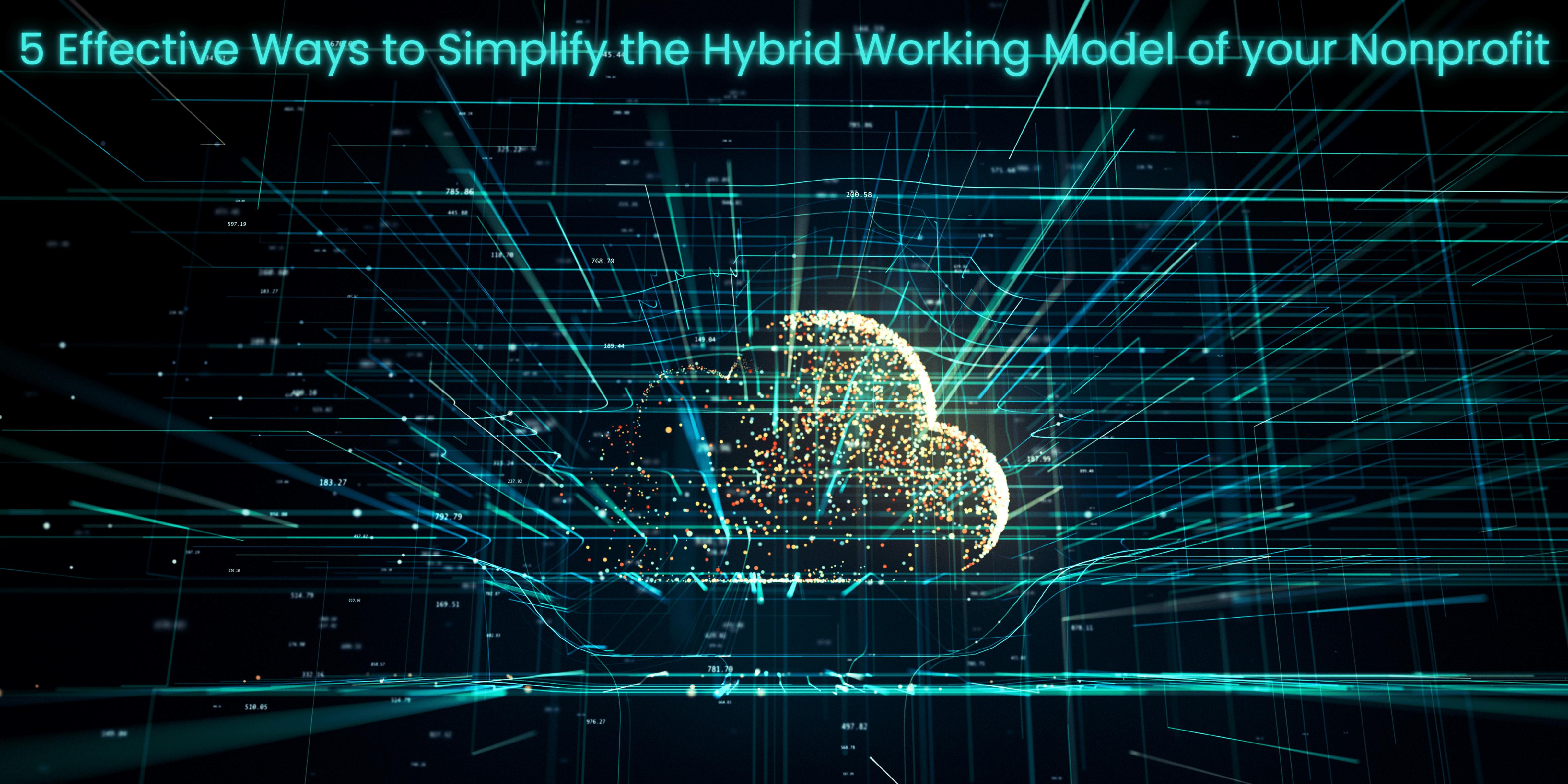The Cloud: 5 Effective Ways to Simplify the Hybrid Working Model of your Nonprofit
Cloud Services
Non-profit Hybrid Working Model:
The Non-profit hybrid working model consists of a mix of employees working remotely from home or other locations as well as employees that commute in person to the office. It’s also becoming one of the most effective ways for IT departments to meet the needs of both internal and external staff at the same time.
A recent Salesforce survey found that 64% of workers are in favour of the hybrid working model. By using a cloud-based hybrid working model, your non-profit can make life much easier for everyone involved. Here are five ways a cloud-based hybrid working model can simplify things for your non-profit organization.
Ways Cloud Will Help Simplify the Hybrid Working Model:
1. Access To Tools and Files:
- The cloud will make it simple for employees to set up their workstations, sign in to communications platforms, and access the data they require.
- Employees at many places can simultaneously access data consistently through a cloud-based centralized data system.
2. Effective Communication:
- According to a McKinsey survey, 66% of employees feel that switching to the cloud has improved their ability to interact.
- Communication is now simpler than ever thanks to platforms like Microsoft Teams, Google Meet, Slack, Webex, Zoom, and many others.
- Cloud-based applications enable team members to collaborate in various ways on a single platform.
3. Resistance To Disaster:
- Losing crucial data at your location could ruin your non-profit.
- Cloud-based recovery models can be implemented with the help of virtualization technologies.
- This enables your non-profit to maintain a copy of all your data on hand in data centers in case of a natural disaster.
4. Enhanced Efficiency and Flexibility:
- According to a Cisco report, 78% of employees claim that the cloud has increased their productivity.
- The cloud applications, free up internal IT staff from routine tasks so, they may concentrate their time and effort on more important projects.
- According to the study by Cisco, cloud-based collaboration tools help firms boost productivity by up to 400%.
5. Improved Security:
- The ability for businesses to expand their staff across the nation or the world is one of the advantages of a remote or hybrid work paradigm.
- For security teams, this kind of rapid growth would be challenging.
- On the other side, cloud-native security solutions are built for easy scaling.
- A VPN, direct internet connection, or mobile connectivity are all consistently and effectively protected by cloud-based cybersecurity.
Conclusion:
A well-designed non-profit hybrid working model strategy can foster increased productivity, cross-management collaboration, and access to larger talent pools. Combining remote and on-site workers, though, is not always an easy procedure.
Because some non-profits are unable to take advantage of the opportunities offered—or may not even be aware of their existence—cloud solutions aren't being used effectively in such organizations.
Fortunately, as this blog post suggests, the cloud can aid in streamlining a non-profit hybrid working model. The cloud-based non-profit hybrid working model makes it easy for everyone to access information and documents anytime and anywhere while reducing operational costs.
